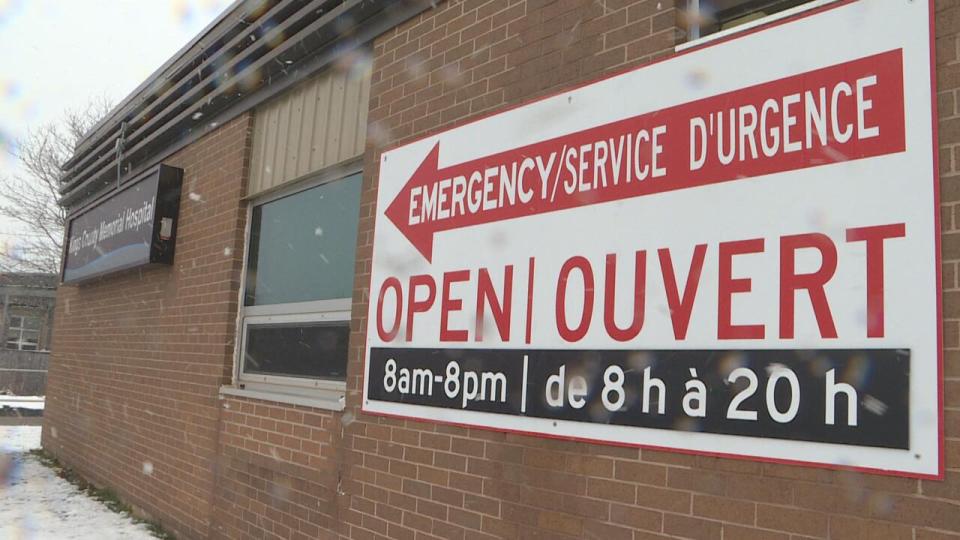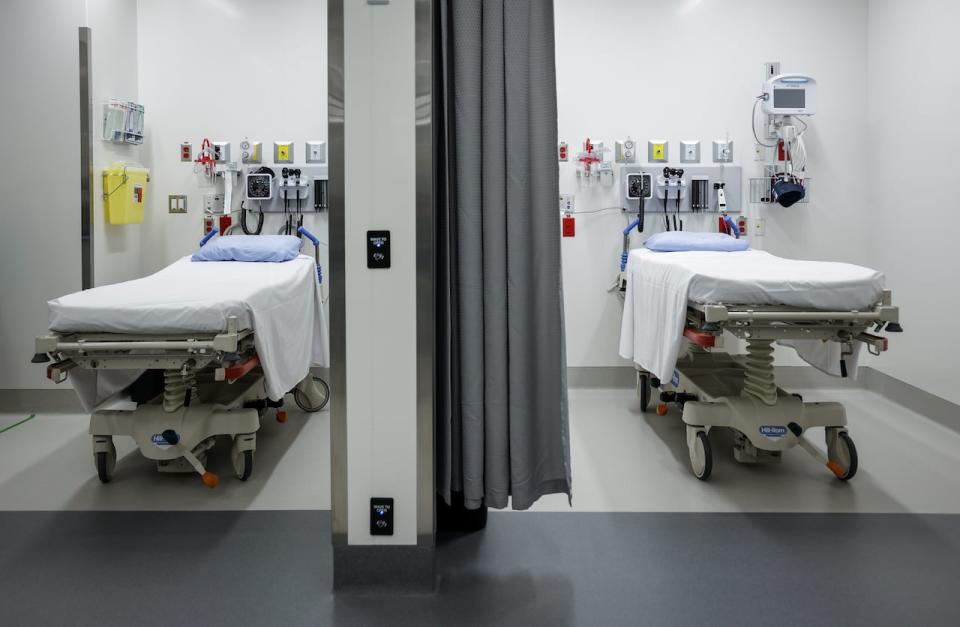Charlottetown hospital ER traffic easing after long, long waits for some

It's been a slower day at the emergency department in Charlottetown's Queen Elizabeth Hospital, which is good news for an operation that has been running near capacity for some time now.
"The current situation is fairly similar to yesterday in terms of our admitted patients," Mike MacDonald, Health P.E.I.'s acting director of nursing, said Wednesday.
"In fact, the numbers are a little bit higher, but the volumes in the waiting room are lower so far today."
Health P.E.I. issued a news release Tuesday afternoon warning of higher than usual wait times at the QEH. Early Wednesday morning, wait times for non-urgent cases were still listed at more than 10 hours, but by midday that had dropped to under four hours — and less than an hour for the most urgent cases.
Last Friday was the peak of the holiday rush at the QEH, according to Health P.E.I. More than 130 people came through the doors, a couple dozen more than normal.
Woman spent 32 hours in total waiting
Katrin Georgi of Wood Islands was one of them. She doesn't have a family doctor and was suffering from abdominal pain, so she drove the 45 minutes to the QEH on Thursday.

Katrin Georgi says she waited 22 hours last Thursday and Friday before being called in to see a doctor at the Queen Elizabeth Hospital's emergency room. (Nicola MacLeod/CBC)
She said she spent about 22 hours before being called in from the waiting room. It would be another 10 hours before her treatment — including a CT scan — was complete and she could leave.
"It dragged on all night," she said. "You're in pain, you feel miserable, and nobody even seems to come in and check on you.
"So anyway, this went on until the next morning. By six o'clock I just went in and said, you know, 'What is going on?' I'm here for — what was that at this point, like 22 hours.... The volunteer who was the day before when I was in there, he came in and looked at me and said, 'Are you still here?'"
It's the system that doesn't work, and I can't even imagine how daunting it is. There's one doctor in there, looking at this mess. — Katrin Georgi
Georgi said a nurse did apologize, but it isn't hospital staff she blames for the long wait.
"It's the system that doesn't work, and I can't even imagine how daunting it is. There's one doctor in there, looking at this mess... That he doesn't pack up and run? I have utter admiration that they actually stayed."
Traffic down by Wednesday
By Wednesday, the flow of patients coming into the department had ebbed, said MacDonald.
Still, shortly after 2 p.m., there were 66 patients in the department, about 30 of whom had been admitted there, a few more than Tuesday morning.

A reduction in hours in the emergency department at Kings County Memorial Hospital was one of a number of factors putting pressure on the Queen Elizabeth Hospital this holiday season. (Brian Higgins/CBC)
Ideally there should be zero admitted patients in emergency, said MacDonald, with patients having that status quickly moving to in-patient areas. But there is nowhere for them to go, because all the other beds in the hospital are full.
The emergency department has just 37 rooms. With more than 30 people admitted, MacDonald said the department doesn't have a lot of wiggle room.
"We can always figure a way to make some space," he said. "Some of those folks that are sick, we try to see them in nooks and crannies and different things like that to get a physician's eyes on them and start treatment as necessary.
"There's little, subtle ways to do things, but it is complicated."
Wait times at Prince County Hospital in Summerside have been closer to normal Wednesday, at no more than six hours.
'That sharp point'
Holidays can be a problem in the emergency department, said MacDonald, because it is the one part of the health-care system that never slows down.

Examination tables are shown at an Alberta hospital emergency department in this file photo. It's rare to have any empty space at the Queen Elizabeth Hospital's ER these days. (Jeff McIntosh/The Canadian Press)
Family physicians could decide to close their offices, there might be fewer walk-in clinics offered, and elective surgeries could be put off. On top of that this year, emergency department hours at Kings County Memorial in Montague and Western Hospital in Alberton were reduced.
I don't think anyone should ever look at those wait-time boards that are online and say, "It's too busy for me to go to the emergency department." I think if you have a medical concern, you should come. — Mike MacDonald of Health P.E.I.
When all those things stop, the emergency departments at P.E.I.'s two main hospitals remain open to deal with whatever comes at them.
Sometimes redeploying workers helps. Health P.E.I. has moved staff from outpatient departments, where fewer appointments are scheduled at this time of year, to help in the emergency department, but lack of access to primary care can leave patients with nowhere else to go.
"The emergency department is that sharp point in the health-care system. It's the only place for people to go, so they do come," said MacDonald.
"We're seeing that in the volume."
On top of those acute issues are chronic problems in the system, such as a shortage of long-term care beds. That shortage eventually reveals itself as a problem in the emergency department, said MacDonald.
A patient waiting for a bed in long-term care is taking up a bed in acute care. That leaves someone in the emergency department with nowhere to go, which means doctors working there have less space to work with.
"The system is all connected," said MacDonald.

Some surgeries were cancelled this week to create space in acute care, says Mike MacDonald of Health P.E.I. (Windsor Regional Hospital)
He said some surgeries have been cancelled this week in an effort to create space in acute care.
Go to the hospital when you need help
While the department is busy, MacDonald said he doesn't want anyone to be discouraged from seeking help.
"I don't ever want someone not to come," he said. "I don't think anyone should ever look at those wait-time boards that are online and say, 'It's too busy for me to go to the emergency department.' I think if you have a medical concern, you should come."
In particular, Health P.E.I. says anyone with these particular issues should call 911 or seek emergency services.
Discomfort or tightness in the chest.
Unusual shortness of breath.
Abdominal pain.
Prolonged and persistent headache or dizziness.
An injury that could require stitches or involve a broken bone.
A child with prolonged diarrhea or vomiting.
A baby under six months of age with a fever of 38°C or higher.


